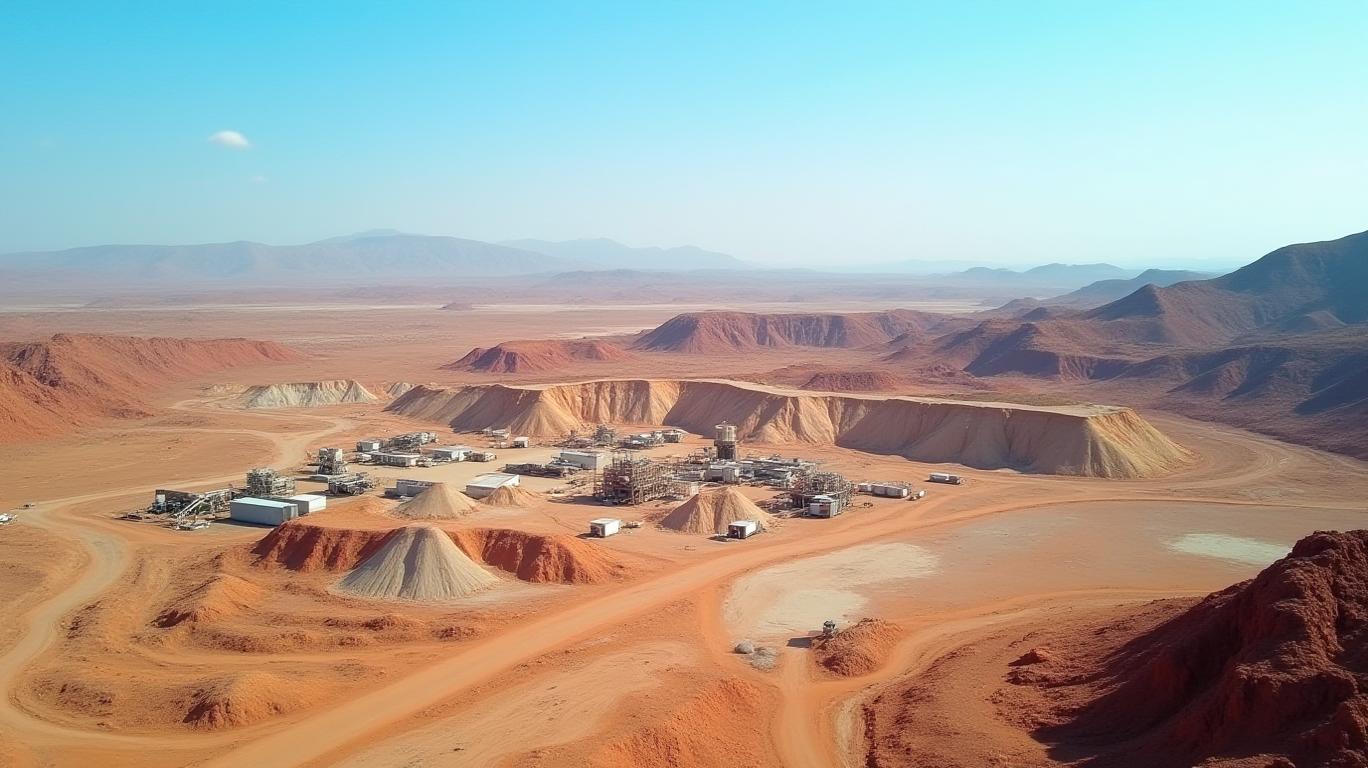NextSource Materials: The Vertically Integrated Play to Dominate EV Battery Materials
The electric vehicle (EV) revolution is not just about batteries—it’s about securing the raw materials that power them. As lithium and cobalt markets face volatility, investors are increasingly turning to graphite, a critical mineral constituting over 95% of lithium-ion battery anodes. Here’s why NextSource Materials (TSXV:NSM) is positioned to capitalize on this shift through its dual-pronged strategy of vertical integration—expanding its Molo Mine in Madagascar while advancing downstream anode facilities—to become a low-cost, high-margin leader in the EV supply chain.
The Goldilocks Opportunity: Graphite’s Time to Shine
Graphite’s moment is now. With global EV sales projected to hit 35 million units annually by 2030 (IEA), demand for battery-grade graphite is set to explode. Yet, the market remains dominated by Chinese producers, which control ~80% of global supply. This reliance creates a vulnerability: geopolitical risks, environmental concerns, and price instability.
NextSource’s SuperFlake® graphite—a large-flake, high-purity concentrate from its Molo Mine—offers a solution. Unlike Chinese alternatives, it requires fewer purification steps, reducing energy costs and carbon emissions. This efficiency, combined with its scalability, positions NextSource to undercut competitors while meeting EV OEMs’ demands for ethical, low-cost materials.
The Molo Mine: A Foundation for Dominance
NextSource’s Phase 1 expansion at Molo aims to hit 17,000 tonnes per annum (tpa) of graphite by 2025, with full permits secured and production already underway. But the real game-changer is Phase 2, targeting 150,000 tpa—a 900% capacity increase—by leveraging the mine’s vast 43.7 million tonnes of graphite resources.

This expansion isn’t just about volume. By vertically integrating production, NextSource avoids the costly middlemen that plague traditional supply chains. For example, its partnership with a Japanese SPG processor (supplying Tesla and Toyota) ensures direct access to EV manufacturers, while its $35,000 tpa offtake deal with thyssenkrupp locks in revenue before Phase 2 even begins.
The Downstream Play: Battery Anode Facilities (BAFs) = Margin Gold
Vertical integration isn’t complete without control over downstream processing. NextSource’s Battery Anode Facilities (BAFs) are designed to turn raw graphite into spherical purified graphite (SPG) and coated SPG (CSPG)—high-value anode materials commanding $5,000–$8,000/tonne premiums.
The Mauritius BAF, initially targeting 3,600 tpa, faces delays due to an unresolved environmental impact assessment (EIA). However, this is a speedbump, not a roadblock. The Company has pre-ordered $12M in transportable equipment and contingency plans to relocate it to the Middle East, where a 20,000 tpa facility (expandable to 100,000 tpa) could bypass regulatory hurdles and align with Saudi Arabia’s EV ambitions.
This comparison highlights NSM’s resilience amid lithium/cobalt volatility, underscoring its de-risked business model.
Catalysts to Watch: Permit Progress, Partnerships, and Pricing Power
- Permitting: The Mauritius BAF’s EIA resolution (expected Q3 2025) could unlock construction, while the Middle East site advances as a backup.
- Offtake Deals: Ongoing negotiations with OEMs for CSPG supply contracts could validate the company’s premium pricing strategy.
- Cost Leadership: Molo’s low operating costs ($500–$600/tonne vs. Chinese peers at $1,000+/tonne) and BAFs’ margin leverage could deliver ~50% EBITDA margins by 2027.
Why Buy Now? De-Risking the EV Supply Chain Play
Investors weary of lithium’s boom-and-bust cycles or cobalt’s ethical issues will find solace in NextSource’s three-pillar strategy:
1. Low-Cost Production: Molo’s geology and vertical integration minimize CAPEX.
2. Premium Pricing: BAFs capture value from battery manufacturers desperate to diversify suppliers.
3. Geopolitical Hedge: Reducing reliance on China aligns with U.S./EU incentives for domestic EV supply chains.
Valuation: 60% Upside by 2027—Why the Bull Case Makes Sense
At current valuations, NextSource trades at a deep discount to peers. Assuming:
- Phase 2 reaches 80,000 tpa by 2027
- BAFs achieve 20,000 tpa with $6,500/tonne pricing
- EBITDA margins hit 45%
A $1.2B EV by 2027 implies 60% upside from current levels. Even a 20% downside scenario (delays in BAFs) would still justify a buy, given the company’s low-cost mine and strategic partnerships.
Final Call: Act Before the Market Catches On
The EV supply chain is undergoing a tectonic shift—from fragmented, China-centric sourcing to vertically integrated, low-cost producers like NextSource. With its mine-to-anode strategy, NSM is not just a graphite play—it’s a future-proofed investment in the infrastructure of the EV era.
Action Item: Buy NSM now at $1.80/share, targeting $2.88 by end-2025 and $3.50 by 2027. The risks are manageable, and the upside is asymmetric.
Investment thesis based on current data as of May 2025. Always conduct due diligence before making investment decisions.

Comments
No comments yet